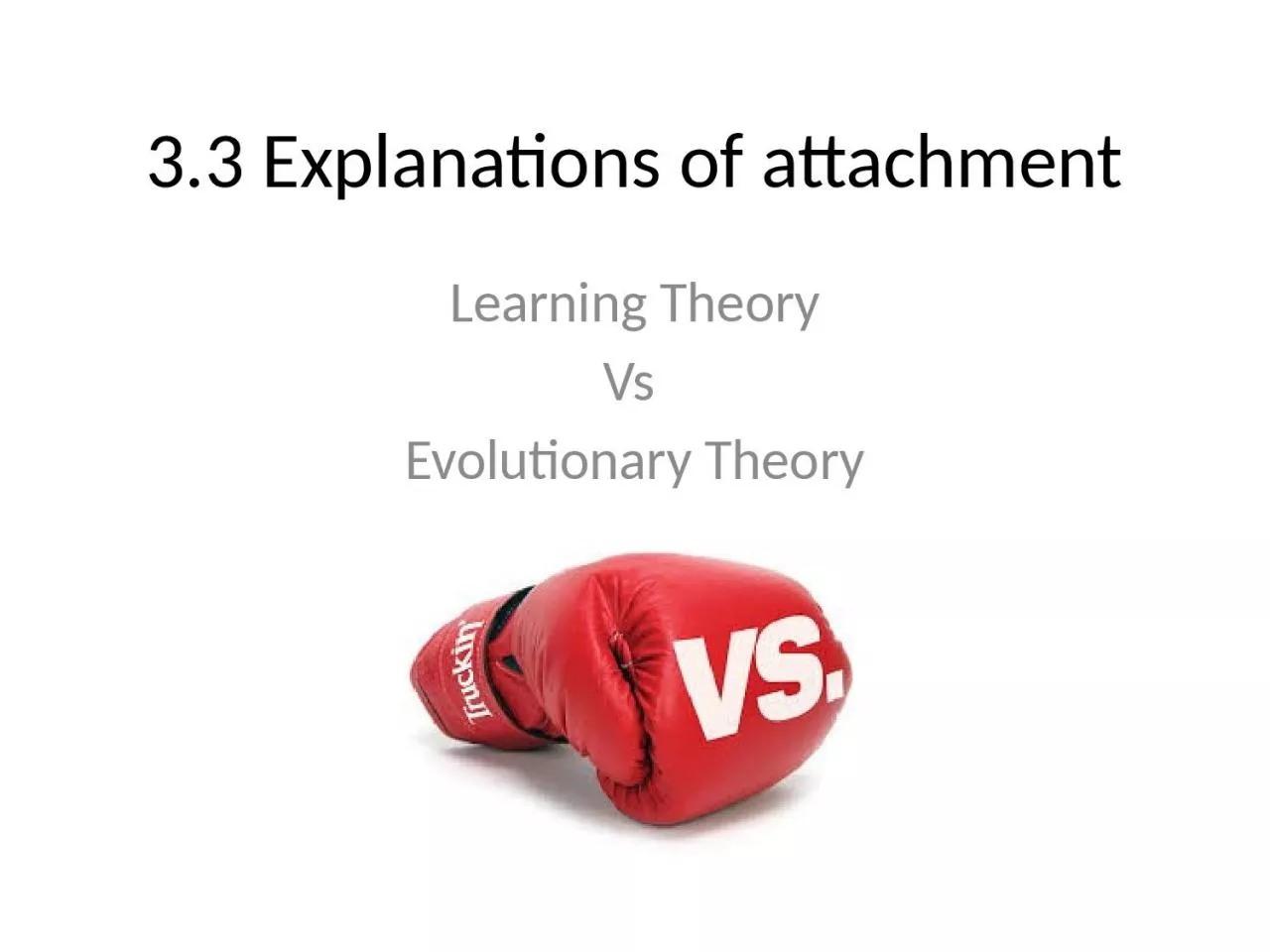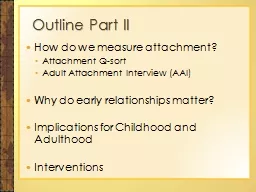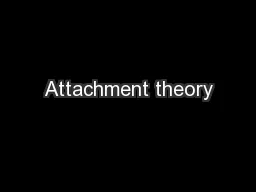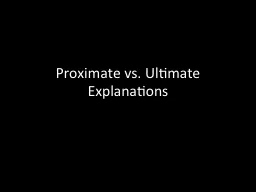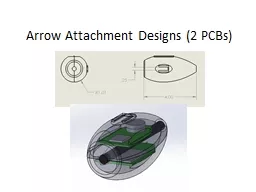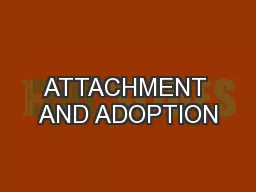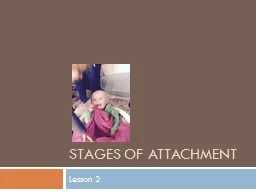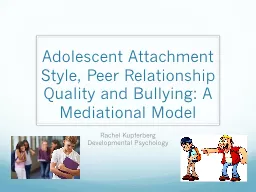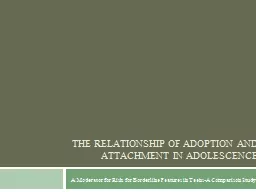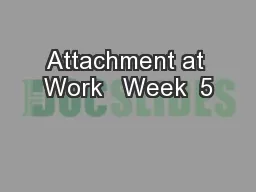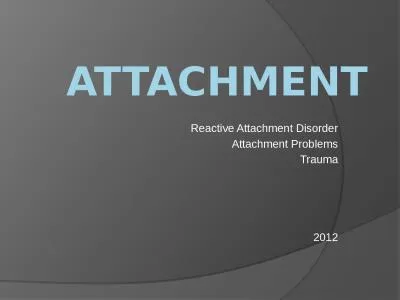PPT-3.3 Explanations of attachment
Author : GorgeousGirl | Published Date : 2022-08-03
Learning Theory Vs Evolutionary Theory Maccoby 1980 identified four characteristics of attachment The infant seeks proximity trying to stay near the caregiver
Presentation Embed Code
Download Presentation
Download Presentation The PPT/PDF document "3.3 Explanations of attachment" is the property of its rightful owner. Permission is granted to download and print the materials on this website for personal, non-commercial use only, and to display it on your personal computer provided you do not modify the materials and that you retain all copyright notices contained in the materials. By downloading content from our website, you accept the terms of this agreement.
3.3 Explanations of attachment: Transcript
Download Rules Of Document
"3.3 Explanations of attachment"The content belongs to its owner. You may download and print it for personal use, without modification, and keep all copyright notices. By downloading, you agree to these terms.
Related Documents

